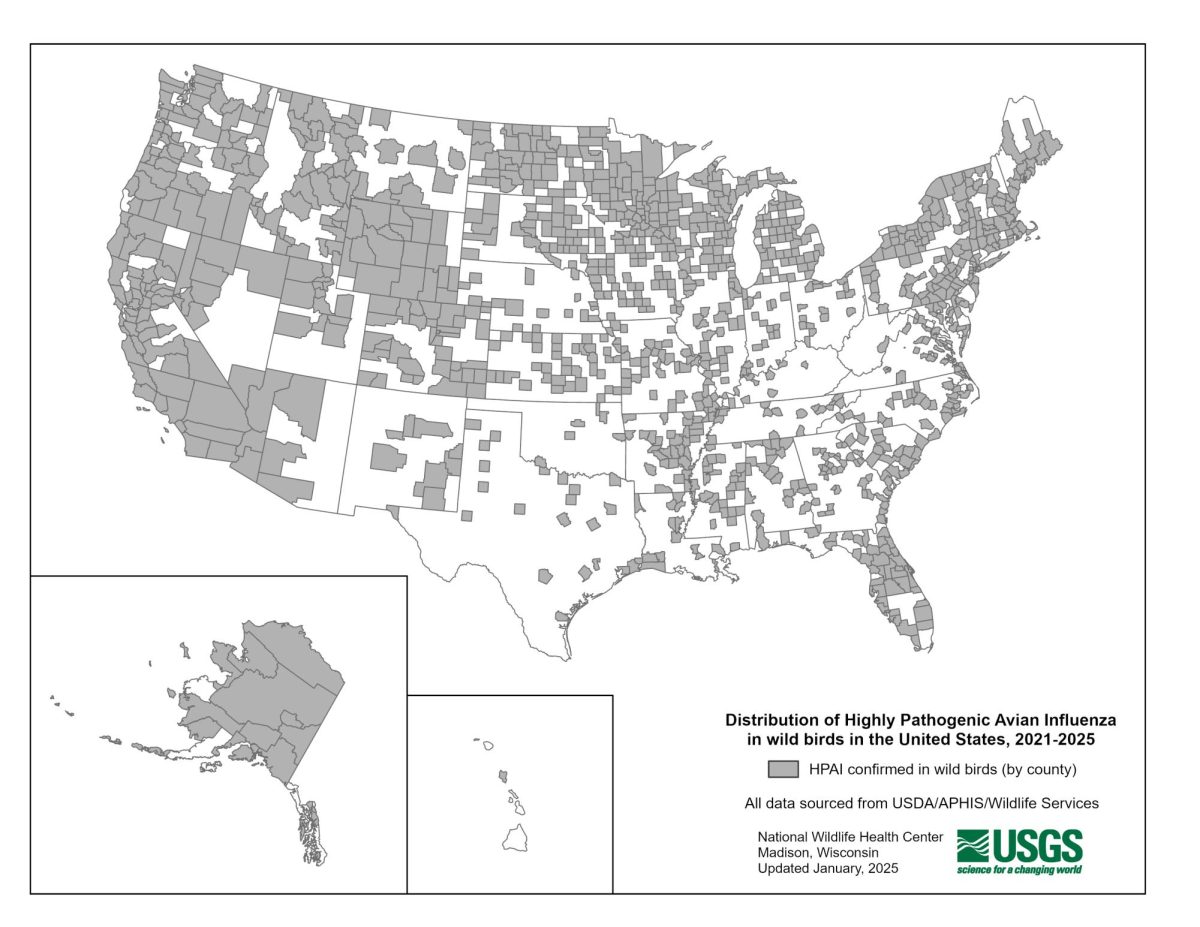Avian influenza, also commonly called bird flu, has always been present among undomesticated waterfowl. Normally, the viruses that these birds carry travel through their populations asymptomatically- in fact 17 of the 19 known subtypes of the influenza A virus can infect birds. However, the continued presence of a Eurasian H5 strain has led to an unusually high death toll in multiple species and locations throughout America.
There are two categories of this virus: low pathogenicity avian influenza (LPAI), and highly pathogenic avian influenza (HPAI). The strain of avian influenza currently causing outbreaks is highly contagious and easily transmitted, so it is referred to as HPAI H5N1 (a strain of H5). “H5 bird flu is widespread in wild birds worldwide and is causing outbreaks in poultry and U.S. dairy cows with several cases of H5 in U.S. dairy workers.” (CDC)
In March 2024, the virus was detected for the first time in dairy cows, infecting 876 dairy herds in 16 states. As of December 2024, it had affected around 11,000 wild birds and 125 million poultry, and there were 65 confirmed cases of bird flu in humans in the United States. People usually are infected via direct unprotected contact with birds. While there haven’t been any human-to-human transmissions in the recent outbreak, the viruses could mutate. Common bird flu symptoms include fever, problems breathing, pink eye, upset stomach and vomiting, and diarrhea.
American Egg Board President and CEO Emily Metz said on Tuesday that the nation’s egg farmers continue the fight against bird flu. She said in her statement that “volume sales of eggs at retail value have been up year-over-year for 22 consecutive four-week periods.” According to the statement, the current threat is affected by two factors: avian flu showing up in dairy cattle and changes in migratory bird patterns due to extreme climate events. Prices for eggs in stores have increased 8.4% from November to December, based on the U.S. Bureau of Labor Statistics, and the USDA predicts that egg prices will continue to rise up to 20% this year due to a shortage of eggs.
The CDC is continuing to monitor the situation. It is advised to get your seasonal flu vaccine to avoid co-infection and avoid raw dairy products, as well as minimize or avoid exposure to wild and domestic birds that may be infected. Common symptoms of HPAI in infected birds include “swimming or walking in circles, holding the head or neck in an unnatural position, the inability to smoothly rotate or tilt the head, and difficulty flying…” (Audubon Great Lakes). Finally, people should report sick birds or other animals to the state or the federal government, either through their state veterinarian or by calling the USDA at 1-866-536-7593.







